Pollinators, including bees, butterflies, hummingbirds, and other beneficial insects, play a crucial role in maintaining healthy ecosystems and productive gardens. Even if you live in an apartment or have limited outdoor space, you can create a container garden that supports pollinators, while enjoying vibrant blooms and fresh produce.
This guide provides step-by-step instructions, plant recommendations, and expert tips for building a container garden that attracts and sustains pollinators.
Why Pollinators Are Important
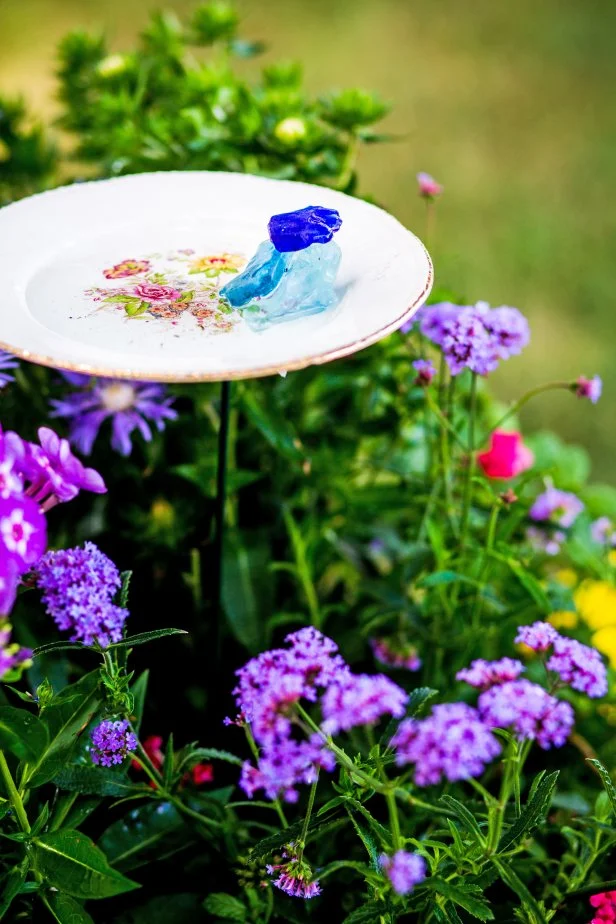
Pollinators are essential for fertilization and fruit production. Approximately 75% of flowering plants and one-third of global food crops depend on pollinators. By creating a pollinator-friendly container garden, you contribute to:
- Biodiversity: Supporting bees, butterflies, and hummingbirds helps maintain a healthy ecosystem.
- Food Production: Fruits, vegetables, and herbs in your garden benefit from pollination.
- Sustainability: Urban gardens provide habitat for pollinators in areas lacking natural floral resources.
- Aesthetic Beauty: Pollinator-friendly plants produce vibrant, fragrant blooms that enhance garden charm.
Step 1: Choosing the Right Container
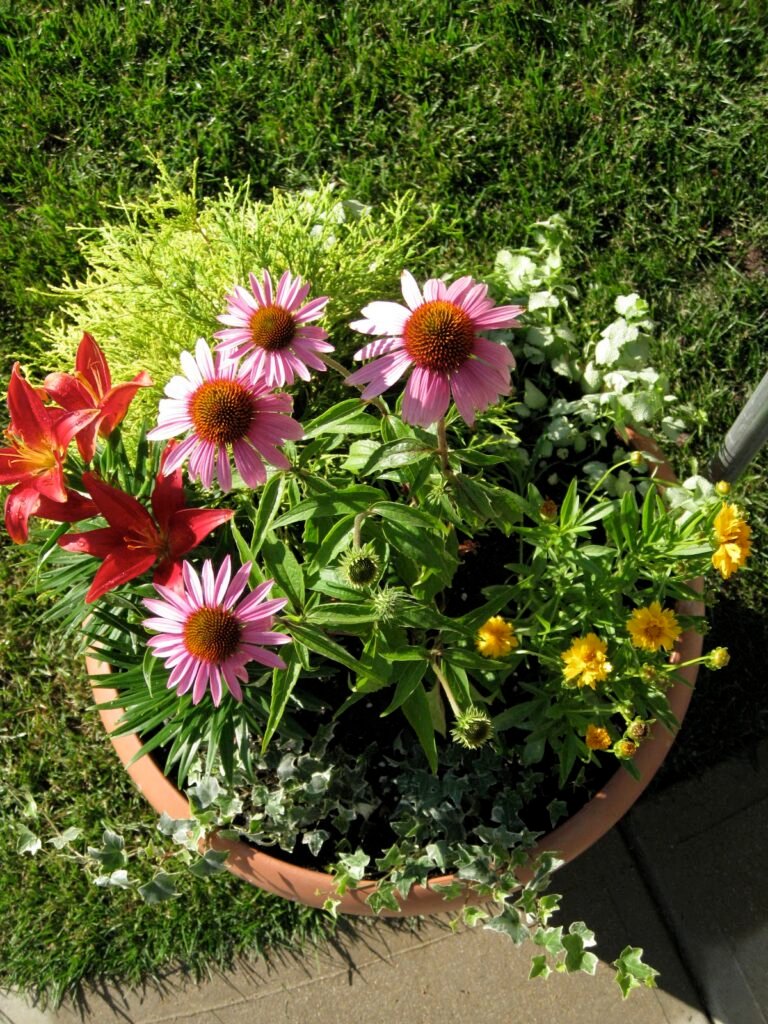
The first step in creating a pollinator-friendly container garden is selecting suitable containers. The container should support healthy root growth and allow for proper drainage.
Recommended Containers:
- Ceramic or Terracotta Pots: Porous materials prevent waterlogging and help maintain moderate soil moisture.
- Plastic Containers: Lightweight and easy to move, especially for indoor or balcony gardens.
- Hanging Baskets or Window Boxes: Ideal for vertical spaces, attracting pollinators at different heights.
- Large Planter Boxes: Perfect for creating mini-pollinator habitats with multiple plants.
Tips:
- Ensure all containers have drainage holes.
- Choose sizes according to plant type: shallow pots for herbs and annuals, deep pots for shrubs or perennial pollinator plants.
- Group containers together to create a dense, pollinator-friendly habitat.
Step 2: Selecting Pollinator-Friendly Plants
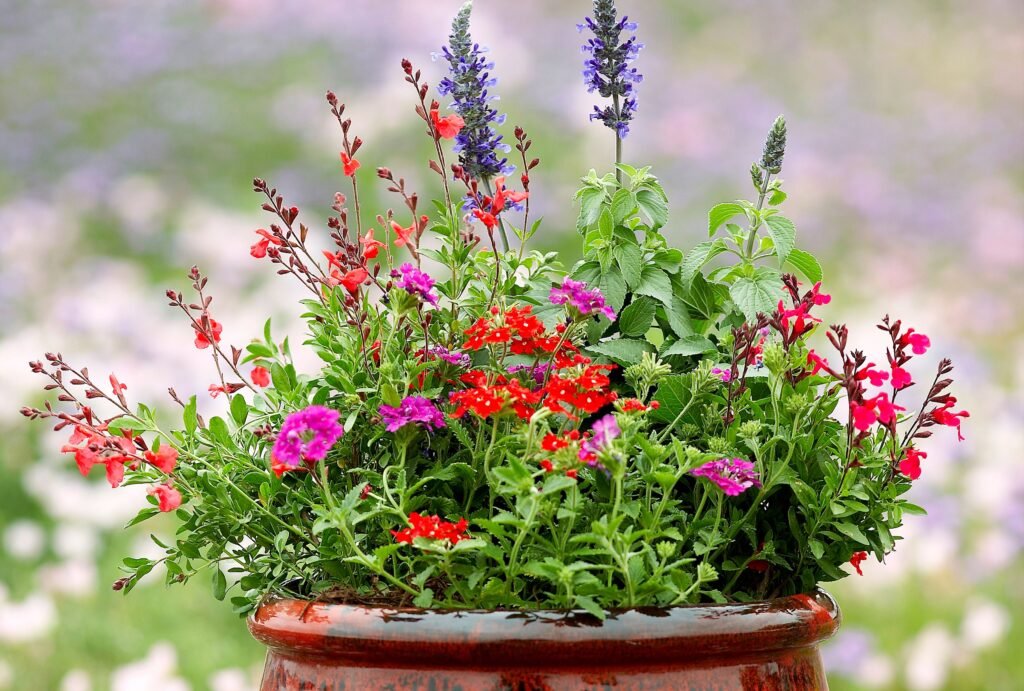
Pollinators are attracted to flowers with nectar and pollen. For container gardens, choose a variety of colors, shapes, and bloom times to provide a continuous food source.
Best Flowering Plants for Pollinators:
- Lavender: Fragrant flowers attract bees and butterflies; thrives in sunny, well-drained pots.
- Coneflowers (Echinacea): Bright, daisy-like blooms favored by butterflies and bees.
- Marigolds: Easy to grow, vibrant colors attract pollinators and repel some pests.
- Salvia: Tubular flowers are ideal for hummingbirds and long-tongued bees.
- Zinnias: Colorful, long-blooming flowers attract butterflies and beneficial insects.
- Sunflowers (Mini Varieties): Provide pollen and nectar while adding vertical interest.
Pollinator-Friendly Herbs:
- Basil, Thyme, Mint, Rosemary, and Oregano flower abundantly and attract bees.
- Culinary herbs also provide a dual benefit of being edible for humans.
Tips:
- Mix annuals and perennials for continuous blooms.
- Plant clumps of the same species together; pollinators are more likely to visit dense floral clusters.
- Use native plants when possible, as they are particularly attractive to local pollinators.
Step 3: Optimizing Soil and Fertilization
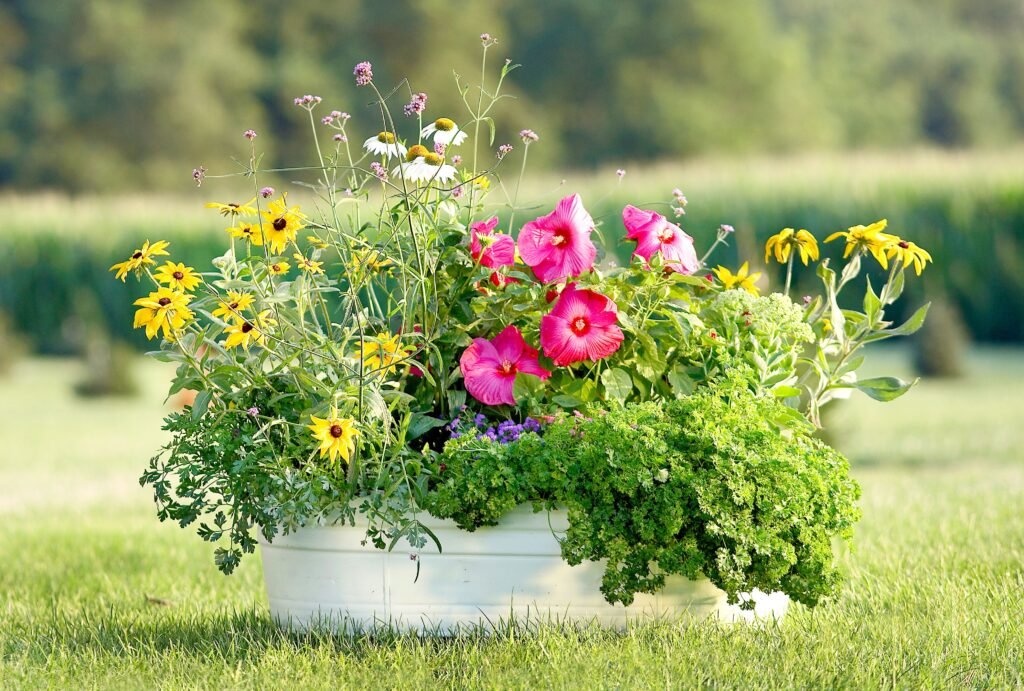
Healthy soil is essential for vibrant blooms and robust nectar production. Container plants require well-draining, nutrient-rich soil.
Recommended Soil Mix:
- 50% high-quality potting soil
- 25% compost or well-rotted organic matter
- 25% perlite or vermiculite for drainage
Fertilization Tips:
- Use slow-release fertilizer for long-term nutrient supply.
- Apply organic liquid fertilizer every 2–3 weeks during the growing season.
- Avoid over-fertilizing with high nitrogen; it encourages leafy growth over flowers.
Step 4: Watering Your Container Garden
Pollinator-friendly flowers thrive with consistent moisture, but overwatering can harm roots and reduce nectar quality.
Watering Tips:
- Water containers when the top 1–2 inches of soil are dry.
- Deep watering encourages strong root development.
- Mulch the soil surface with bark chips or straw to reduce evaporation.
- Consider self-watering pots for continuous moisture and reduced maintenance.
Step 5: Arranging Plants to Attract Pollinators
The layout of your container garden influences pollinator visitation.
Arrangement Tips:
- Group plants in clusters of 3–5 of the same species to make them more visible.
- Place taller plants at the back and trailing plants near edges.
- Combine different flower shapes and colors to attract a variety of pollinators.
- Use hanging baskets to provide nectar at different heights for hummingbirds.
Tips:
- Keep flowering plants close to edible crops to improve pollination.
- Avoid placing containers in windy or shaded areas that discourage pollinator visits.
Step 6: Providing Shelter and Habitat
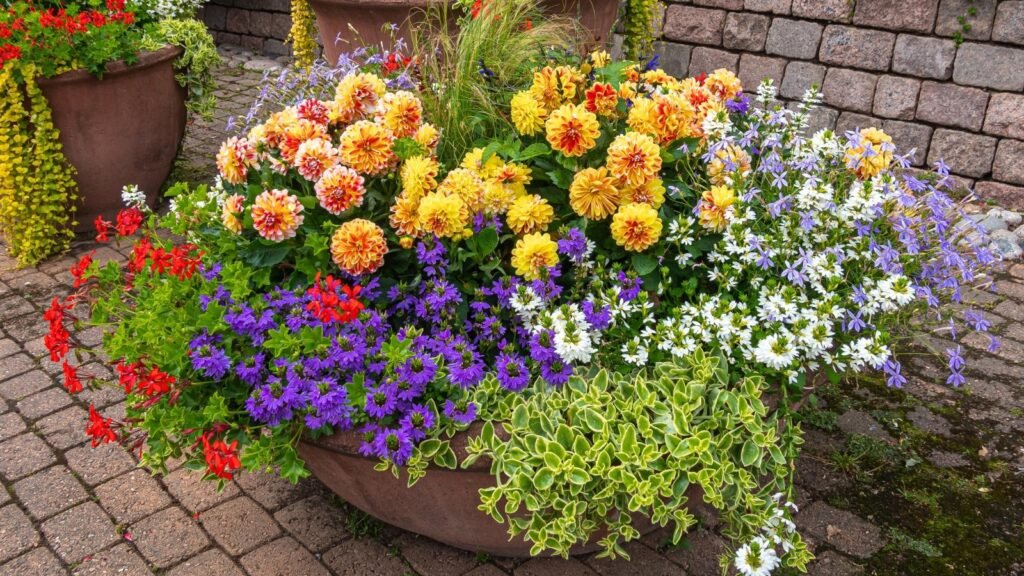
Pollinators need more than flowers; they require shelter and safe spaces to rest and nest.
Ways to Support Pollinators:
- Add small bee hotels or wooden blocks with drilled holes for solitary bees.
- Include rocks or twigs for butterflies to perch.
- Avoid pesticides that can harm pollinators.
- Provide a shallow water source, such as a saucer with pebbles, for bees and butterflies.
Step 7: Seasonal and Successional Planting
A successful pollinator container garden ensures blooms throughout the growing season.
Tips:
- Plant early bloomers like borage or pansies in spring.
- Include mid-season flowers such as coneflowers and salvias.
- Add late-season blooms like asters and goldenrod to extend nectar availability.
- Succession planting ensures continuous pollinator visits and healthy fruit/vegetable production.
Step 8: Monitoring and Maintaining Your Garden
Regular care keeps your pollinator container garden thriving.
Maintenance Tips:
- Deadhead spent flowers to encourage continuous blooming.
- Remove diseased or damaged leaves promptly.
- Rotate containers if sunlight exposure is uneven.
- Observe pollinator activity and adjust plant placement if certain species are less visited.
Benefits of a Pollinator-Friendly Container Garden
- Increased Yields: Vegetables and fruits benefit from better pollination.
- Biodiversity Support: Provides habitat for bees, butterflies, and hummingbirds in urban environments.
- Educational Opportunities: Learn about plant-pollinator relationships and seasonal growth.
- Aesthetic Value: Vibrant flowers and active pollinators create a lively, beautiful garden.
- Sustainable Gardening: Supports ecological balance without pesticides.
Conclusion
Creating a container garden that attracts pollinators is simple, rewarding, and environmentally beneficial. By carefully selecting pollinator-friendly plants, optimizing soil and water, arranging plants thoughtfully, and providing shelter, even small spaces can support a thriving pollinator ecosystem.
Key steps include:
- Choosing the right containers with proper drainage.
- Selecting a variety of flowers and herbs that provide nectar and pollen.
- Using well-draining, nutrient-rich soil.
- Providing consistent watering without over-saturating the soil.
- Arranging plants in clusters and varying heights to attract multiple species.
- Offering shelter and safe habitat for resting and nesting.
- Practicing seasonal and succession planting for year-round blooms.
By implementing these practices, your container garden will not only look stunning and produce beautiful flowers but also support essential pollinators, contributing to a healthier, more sustainable environment.
